Featured Book
Natural Capitalism
Creating the Next Industrial Revolution
The word “capitalist” commonly refers to an individual who puts up money for projects and is focused on profits. In some circles, the word is a pejorative, with allusions to crooked financiers and others with a greed-is-good mentality. But Natural Capitalism redefines the word and argues that we must all be capitalists, in a very different sense of that word, if we are to survive.
In the late 1990s, three distinguished environmental advocates teamed up to establish a clear set of guidelines for sustainable development. Given the current political pressure to pit (erroneously) science and sustainability against the best interests of citizens and business, it’s time we revisited those guidelines, as relevant today as they were 20 years ago.
The authors assert that four forms of capital must be considered of equal value: financial capital (money in all its forms), manufactured capital (man-made items such as highways, buildings, and consumer goods), human capital (individuals and groups who live and work together), and natural capital (the ecosystems that sustain life: oceans, lakes, and rivers; savannahs, deserts, and prairies; what’s under the ground, on the surface, and in the air—everything in the natural world).

When stock prices plunge overnight, factories close, or individuals are unemployed, we know how to assess the costs. But how do we compute the costs of waterways becoming polluted from agricultural runoff, mangroves being filled in and paved over for a shopping center, or local landfills daily receiving discarded materials that will last for centuries and contaminate the soil? As the authors of Natural Capitalism assert, because we are not paying close enough attention to this form of capital, we do not include the costs of destroying the living systems around us in the costs of the extracting, clearing, building, and making that we consider progress.
So the depletion of our natural capital continues, and it’s not just that forests and fish are disappearing. The living systems that make Earth habitable are also losing their vitality. All aspects of our natural capital are diminishing rapidly. We must learn to arrest and reverse the decline while designing, building, manufacturing, and trading in ways that are cost effective and that enhance people’s lives. As the authors assert, we may not literally be able to price elements of our natural capital, but “behaving as if we were doing so is a first step toward incorporating the value of ecosystem services into planning, policy, and public behavior.”
The authors point to four essential strategies:
- Use natural resources much more efficiently so as to slow outright depletion.
- Mimic highly-efficient biological systems that have built-in recycling mechanisms.
- Change the foundations of our economy from creating goods to providing services so that quantity produced is not as important as quality, utility, and performance.
- Shift from destroying natural capital to sustaining, restoring, and expanding it.
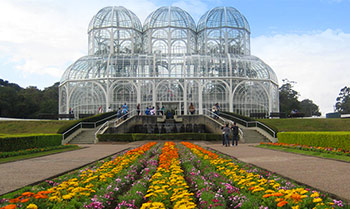
The book presents numerous examples of how these strategies have already led to innovative products, processes, and systems and how people’s lives have been made simultaneously more convenient, more environmentally sustainable, and more economical.
The transformation of Curitiba, Brazil, into an attractive, well-run city is an especially instructive example. The effort began in the 1970s, driven by a visionary mayor, and continued with the purposeful collaboration of government leaders, businesses, non-governmental organizations, utilities, citizens groups, and individuals.
The results so far have been impressive: dramatically improved and more economical transportation systems, better protection of the city’s water and air, a range of thoughtful regulations for land use and development, a heavy emphasis on recycling, and more.
The city has made an admirable commitment to re-thinking systems, with overall goals to use resources wisely and efficiently, boost the economy, and make life better for the people who live and work in the city.
The government encourages citizens to be active participants in making decisions and devising solutions to problems, while the citizens count on the government being “transparent, honest, and accountable.” And the transformation has lasted. Today, the Lonely Planet’s website describes Curitiba as “the envy of urban planners the world over and Brazil’s most efficient city.”

The authors of Natural Capitalism call for rethinking not only urban planning but also architectural design and building construction, industrial design and manufacturing processes, food production, water and land management, and other aspects of human endeavors so that we do things with a full understanding of what they cost in terms of the four types of capital. They also call for government policies and regulations that will put in place the most effective incentives for equal consideration and valuation of all four forms of capital. And they urge rethinking of the measurements we typically use to evaluate success, noting that Gross Domestic Product includes money spent to build prisons as well as new homes, to buy cigarettes as well as the drugs to treat lung cancer, to install solar panels as well as pump oil and clean up spills.
From the perspective of Natural Capitalism, we need a new way of valuing economic activity that shows clearly not only the gross expenditure but also a net that takes into account wastes and inefficiencies, that measures value received instead of only funds spent, and that reflects the creation of well-being instead of only market activity.
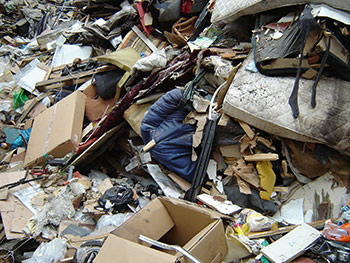
Natural Capitalism is filled with facts that help us understand the authors’ point of view. For example, “Americans waste or cause to be wasted nearly 1 million pounds of materials per person per year,” a figure that takes into account trillions of pounds of CO2 emissions along with billions of pounds of discarded food and household goods, polystyrene peanuts, construction debris, and other materials that are thrown away or wasted in the manufacturing and processing of the things we use.
What that means is that the diligence of the most conscientious individual in the United States, who puts every scrap of plastic, paper, and metal in the weekly recycling bin, is overshadowed by the unseen waste generated by poorly-designed industrial processes, hazardous chemicals generated from manufacturing, and other forms of inefficiencies that are beyond the immediate control of that conscientious individual.
The most significant message of the book is twofold: First, the many problems we face are interconnected, and the solutions require a common understanding of the workings of the natural world and the impacts we have on it that is as thorough as our understanding of the other forms of capital. Second, in defining and solving the problems, we do not have to choose between economic growth and the protection of sensitive ecologies, between technological efficiency and good jobs for all, between profits for corporations and fair treatment of individual workers. We can have increasingly rewarding lives, with innovative and cost-effective products and systems, while also significantly restoring and enhancing the natural world and addressing the ills of society that today consume so much of our time and resources.
To accomplish this, we need to change the way we think about what we’re doing and change our ways of doing.
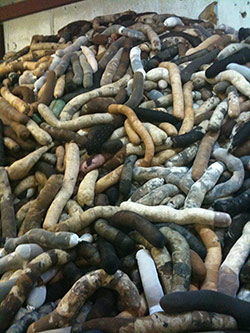
The book has many examples of effective and economical new ways of doing things—ways that help business and industry save money while protecting the environment. One is the story of the hairdresser who, having watched the Exxon Valdez oil spill with great concern, experimented with the cut hair in his salon and found that it worked well to soak up oil. An expert at NASA tested the hairdresser’s idea and “found that ‘1.4 million pounds of human hair contained in mesh pillows could have soaked up the entire Exxon Valdez oil spill in a week,’ saving much of the $2 billion Exxon spent to capture only 12 percent of the 11 million gallons spilled.” Since then, human hair and animal wool have been used for comparable cleanup efforts around the world, and further research is currently being done in Australia on using inexpensive and natural materials instead of more expensive synthetic dispersants, which appear to be causing still further pollution.
We do not have to choose between economic growth and the protection of sensitive ecologies, between technological efficiency and good jobs for all, between profits for corporations and fair treatment of individual workers.
Other examples of innovative processes and products include:
- an alternate design for a pumping system that cost less to install, improved performance, and resulted in a 92% reduction in operating horsepower, substantially lowering operating costs
- new climate-control measures for an old office building that were four times as efficient as the original system, reducing energy costs by 75% while costing essentially the same as a proposed standard renovation without the energy-saving measures
- an innovative upholstery fabric that was designed to be completely compostable while using fewer and cheaper chemicals to make, generating no pollution from the manufacturing process, reducing production costs, and reducing the environmental costs of disposing the fabric at the end of its life
Other examples in the book show how government policies have led to more sustainable actions:
- Singapore’s imposition of heavy fees on cars to discourage driving in the city, coupled with use of the proceeds to improve public transport, reducing the number of cars in the city and increasing traffic flow.
- Palm Desert’s 85% reduction in its water use and maintenance costs of median strips by means of intelligent landscaping that met with high public approval
- Denmark’s increase in landfill taxes that led builders to quickly begin reusing construction debris they had been discarding—reuse that went from 12% to 82%.
The most refreshing message of the book is that people holding very different perspectives can work together to accomplish their respective priorities instead of continually arguing about who is right and trying to get the better of one another. If corporate leaders, government agencies, environmental activists, think-tank heads, workers in all industries, and everyone else can see that the loss of natural capital is as significant as stock market crashes or factory closures, then all can begin working together to fight the right battles.
This book helps to create the common understanding needed for that essential collaborative effort—an effort that involves engaging in profitable ventures that improve people’s lives while reducing costs and restoring the living systems on which we all depend.
Note: The 2009 edition of this book is available for Kindle.
Physicist Amory Lovins is cofounder and Chief Scientist of Rocky Mountain Institute; energy advisor to major firms and governments in 65+ countries for 40+ years; author of 31 books and 600 papers. He is also an integrative designer of super-efficient buildings, factories, and vehicles.
L. Hunter Lovins, a promoter of sustainable development for over 40 years, is president of Natural Capitalism Solutions, in Longmont, Colorado. She teaches sustainable business management at Bard College in New York and was a founding professor at Presidio Graduate School’s MBA in Sustainable Management program (2002-2010).

Doughnut Economics
7 Ways to Think Like a 21st Century Economist
Kate Raworth; reviewed by George Kasabov
A “renegade economist” advances a new, more comprehensive and regenerative economic model – one based on a view of humans as socially adaptable beings in a world of limited natural resources. A view that factors in the love and caring of family life, the kindness and cooperation of society, and the search for meaning and morality over the getting and spending of money as the essential aim of human existence.

Rescuing the Planet
Protecting Half the Planet to Heal the Earth
By Tony Hiss
Could it be possible to set aside half the earth’s land and sea for nature by the year 2050? Former New Yorker staff writer Tony Hiss investigated the feasibility of this ambitious idea proposed by biologist Edward O. Wilson and emerged inspired and surprisingly optimistic. These efforts are already underway and must focus immediately on a few dozen threatened “hotspots,” home to an enormous percentage of Earth’s plant and animal species, many of which are found nowhere else on the planet. READ MORE »
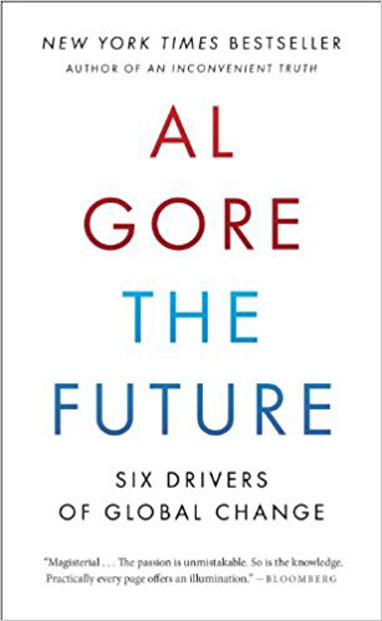
The Future
Six Drivers of Global Change
Al Gore
No period in global history resembles what humanity is about to experience. Explore the key global forces converging to create the complexity of change, our crisis of confidence in facing the options, and how we can take charge of our destiny.
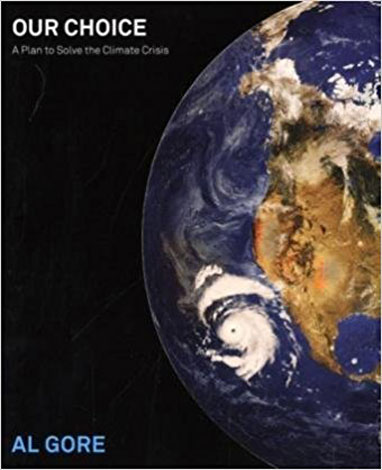
Our Choice
A Plan to Solve the Climate Crisis
Al Gore
We clearly have the tools to solve the climate crisis. The only thing missing is collective will. We must understand the science of climate change and the ways we can better generate and use energy.
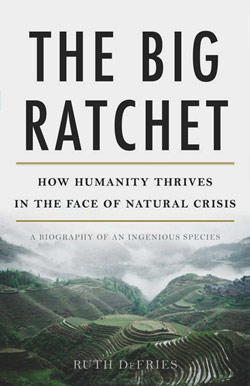
The Big Ratchet
How Humanity Thrives in the Face of Natural Crisis
Ruth DeFries
Human history can be viewed as a repeating spiral of ingenuity—ratchet (technological breakthrough), hatchet (resulting natural disaster), and pivot (inventing new solutions). Whether we can pivot effectively from the last Big Ratchet remains to be seen.
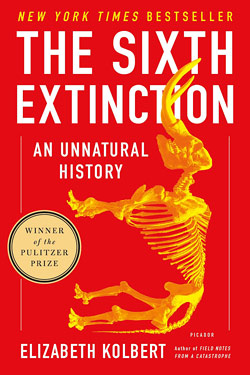
The Sixth Extinction
An Unnatural History
Elizabeth Kolbert
With all of Earth’s five mass extinctions, the climate changed faster than any species could adapt. The current extinction has the same random and rapid properties, but it’s unique in that it’s caused entirely by the actions of a single species—humans.
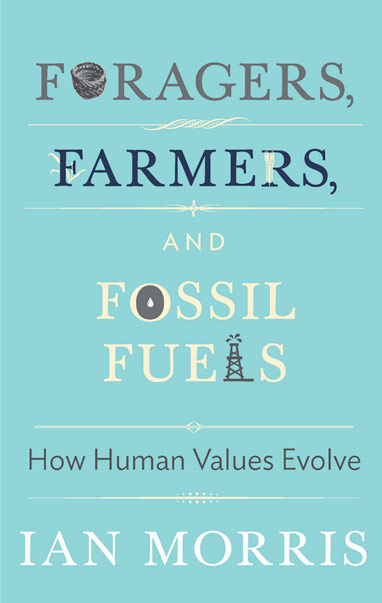
Foragers, Farmers, and Fossil Fuels
Ian Morris
Human social development, says Morris, is constantly generated by environmental and social factors. The amount of energy that can be extracted from the environment through technology defines the social possibilities, and thus influences the attitudes and world view of each epoch.
In the series: A Sustainable Planet
Related articles:
Further Reading
External Stories and Videos

Business Stepping Up
Natural Capitalism Solutions
Find resources for decision-makers in business, government and civil society for profitably implementing regenerative practices. Explore an extensive library of innovative, practical tools and strategies for companies, communities and countries.
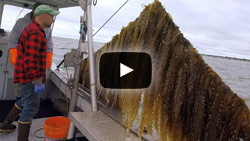
Watch: Seaweed Farming and Its Surprising Benefits
Lesley Stahl, CBS 60 Minutes
Increasing numbers of fishermen, scientists, and foodies in this country are starting to look at seaweed very differently — as a promising source of food, jobs and help cleaning ocean waters. With rising global populations and limited space to expand agriculture on land, they are turning to the sea — and its “weeds” — as a new frontier.

